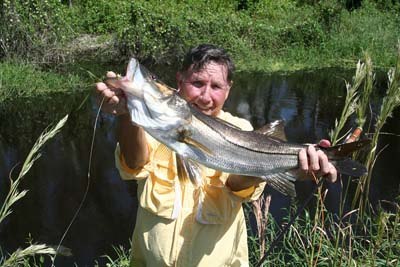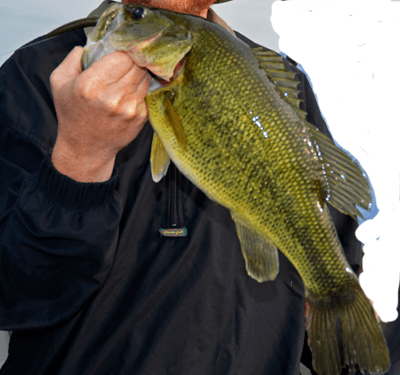[dropcap]W[/dropcap]ith regard to handling and releasing fish there are several lists of dos and don’ts compiled by fish specific organizations like the Bonefish & Tarpon Trust, Snook & Gamefish Foundation and state fisheries management commissions, federal fisheries management administrations, like NOAA, a bevy of sport fishing publications, several good online websites and some well intentioned bloggers-like Bonefish on the Brain.
The best practice for releasing billfish and other offshore heavyweights are best addressed by the International Game Fish Association (IGFA), The Billfish Foundation (TBF) and Marlin magazine.
The editors’ pet-peeves with regard to safe release of non-billfish and other offshore heavyweights are these four most witnessed mistakes. The post-release fish mortality skyrockets when these unintended-to-do-harm practices are engaged in:
1. Handling fish with dry hands or gloves removes protective slime. Slime is like our skin. Rupture it and infection is possible. In the wild there are no pharmacological remedies.

Skip Clement, publisher of Fly Life Magazine.com, probably kept this nice Everglades snook out of the water too long. Steve Kantner photo / 2013.
2. Extending the fight. Sometimes it’s unavoidable and it happens. While fishing for one species, like a bonefish in a mangrove setting, an opportunistic 40-pound tarpon races from nowhere and grabs the fly. That 7- 8-weight hasn’t the backbone to settle the catch in a few minutes unless you’re a very skilled angler; know how to use the butt of the rod along with your legs. Not the tip-top of the rod.
More realistically, those that feel they’re manning-up when they fish for say a permit and purposely under-gun and use low-single digit pound-test tippets create fish kill problems. That kind of intentional under-rigging necessitates wearing out the opponent. The release of a fish in this state invites predation or death by exhaustion. The percent of survivors stressed to death in that circumstance is very high.
3. Gripping and lifting a fish, like a largemouth bass by the lower lip without any body support for a show and tell camera shot is not good. The chances of breaking or dislocating its much needed jaw is possible. If you’ve tampered at all with jaw mechanics it’s a done for fish.
4. Over staying the fish out of water will lead to a bad outcome. Try to get your photo op with a well supported fish and do so in seconds not minutes.
Best Practices for Catch & Release, courtesy of Snook & Gamefish Foundation
Fish Handling
Minimize handling, since this can remove protective slime from the fish.
If you handle a fish, use clean, wet hands.
Support the fish beneath the head and belly.
Minimize exposure to air, maximum 15 seconds.
Avoid using mechanical lip-gripping devices on active fish, since this can cause jaw injury.
If a fish’s weight is desired, attach a cradle to the scale to support the fish’s weight.
Keep fingers away from the gills, damaged gills make it harder for the fish to breathe.

Skip Clement, publisher of Fly Life Magazine.com, probably kept this nice Everglades snook out of the water too long. Steve Kantner photo / 2013.
Hooks
Use barbless hooks, since this reduces the amount of handling needed to remove the hook.
When fishing with bait, use circle hooks.
If a hook is deep within the throat, cut the line as close to the hook as possible. This causes less damage than removing a deeply-set hook; most fish are able to reject the hook or the hook dissolves over time.
Fight Time
Keep the fight short, but not too short.
Long fight times result in an exhausted fish, which is more vulnerable to predators.
A fish reeled in too quickly may thrash about, increasing it’s chances of injury.
Use tackle that matches the fish and conditions.
If a fish looses equilibrium (it rolls over or goes nose down on the bottom), retrieve it until it can swim upright, then shorten the fight time on future fish.
When retrieving a fish, be sure that water passes over the gills from front to back.
Move the fish forward or hold it upright in the water allowing it to pump water through it’s gills.
High water temperatures may negatively impact bonefish survival after release. In warmer water, reduce fight and handling time.
Predators
Since predators can decrease survival of fish after release, when predators become abundant and appear to become attracted to your fishing activity, consider moving to another fishing location. If you have caught a fish and potential predators are near, consider using a circulating live-well to hold your fish for a short time to allow releasing it some distance away from them.
Count Your Catch (This is uniquely Snook & Gamefish Foundation)
Use AnglerAction.org‘s on the water trip record or iAngler phone apps to record your whole catch while fishing. (Remember to record all sizes and 0 catch as well). Help sustain your fishery by counting your total catch and handling with skill all the fish you release. Cick here to vist SGF . . .





I think your blog is useful for my elder brother. He is a big lover of fishing. At this time I am in oneonta oregon trip. After finishing that, I will discuss your blog with my brother. I am sure, He will so happy to see that. For this purpose, he visited a lot of beautiful and stunning River to find out the fish. I hope he likes it.